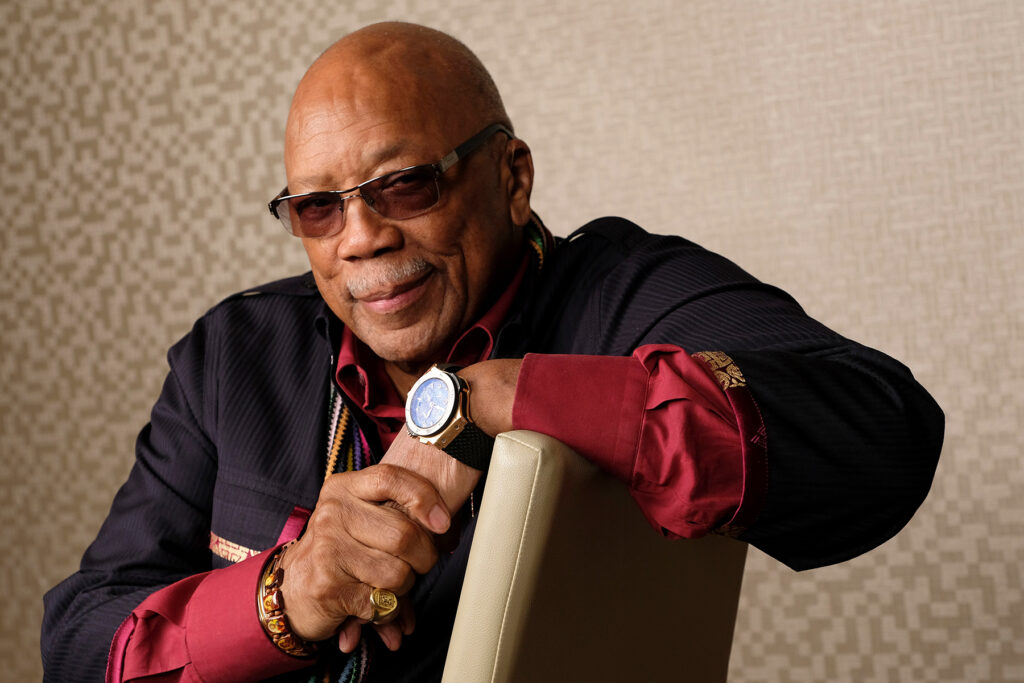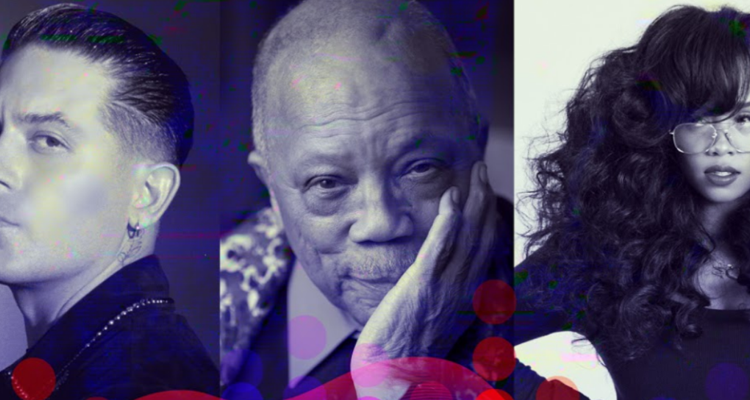In a perfect world, NFT marketplaces and digital collectibles could reshape fans’ experiences – if they are user-friendly and affordable. The music industry report says that a new marketplace called OneOf has been designed specifically for musicians and music fans, and that it will reveal its plans on Tuesday.
The Rolling Stone reports that one of OneOf’s upcoming releases include collections from Quincy Jones, Whitney Houston, Doja Cat, John Legend, TLC, Charlie Puth, Jacob Collier, G-Eazy, Alesso, and other big names. Besides being an owner and partner, Jones also owns the company. A. Fell, president of Quincy Jones Productions, co-founded OneOf with Joshua James, CEO of Digital Media Executive, and Lin Dai, CEO of Tech Entrepreneur. 88 Rising co-founder Jason Ma and Bill Tai, who was one of Zoom’s first investors, invested in the company, which has been in the works for about two years. (Tai also invested in Dapper Labs, which developed CryptoKitties.)

Navigating the most popular NFT platforms – filled with information about trading and hard-to-decipher price tags based on the Ethereum cryptocurrency – is currently quite challenging. It is unlikely that a 12-year-old pop music fan would know how to download a Metamask wallet to store their virtual tokens. The reason OneOf will accept both credit cards and cryptocurrency payments is because children probably can borrow their parents’ credit cards for basic online shopping, Dai told Rolling Stone.
Generally speaking, NFTs are quite expensive as well. There are hardly any NFTs that cater to budget shoppers looking for $10 or $25 options (mainly due to Ethereum’s high minting costs, which can reach as much as $150 per NFT; NFTs must be priced above that cost to turn a profit).
Rather than using Ethereum, OneOf will use the Tezos blockchain and will require no mining fees, which will represent a “first” in the industry. According to Dai, “[the Dapper Labs team] concluded that Ethereum could not scale and support NFTs.” As a result of Dapper’s operations, Ethereum was slowed down to a crawl. There was a problem with [Ethereum] processing transactions quickly enough. However, the cost was also skyrocketing as a result of the large number of transactions. Afterward, they spent two and a half years building their own blockchain.”

Ontop of the one-of-one tokens, OneOf offers a diamond tier for tokens valued at $5 to $20; the platinum tier for tokens valued at $100 to $1000; and the gold tier for tokens valued at $10,000 to $100,000. This is the cheapest tier, of course.
According to Fell, this is where we see real potential for artists. The artists can sell NFTs at any price because we do not charge them minting or gas fees. A million or one NFT doesn’t matter – and a million NFTs are often times even better for some artists, particularly those that are just beginning.
OneOf is also hoping its partnership with Tezos will enable it to win over celebrities who may be suspicious. Dai recalls running calculations a few years ago and estimating how much electricity Ethereum was going to consume, who adds that a US household’s energy consumption takes two days to produce a single NFT. The artist argues that he would prefer to “empower the fans in a responsible way.”

What makes Tezos different? In Dai’s words, Bitcoin is blockchain’s generation-one technology and develops with the goal of preventing attacks and preventing malicious sources from altering data. “The idea was to use computers with super technical, specialized chips that can solve math problems incapable of being solved by regular computers. Costs are so high because it’s so hard. Ethereum is generation two. The “initiating idea” for generation-two originated from computational mathematics as well, but developers lowered the threshold, so graphics processing units (GPUs) could solve the problems.” He notes that Ethereum is more programmable, but that makes it more prone to attacks. Although it’s more efficient, now you’re mining Ethereum with thousands or millions of machines.”. Verifying transactions still requires computational power,” Dai says.
Since six to eight years ago, there has been a third-generation theory. The third group of ideas is the foundation of virtually all new blockchains, Dai says. Bitcoin and Ethereum run on ‘proof of work,’ which means computers must work extremely hard in order to maintain the network. Verifiers don’t have to work very hard: their tokens can be staked for the privilege of confirming a transaction. Collateral is being put up. In other words, you lose collateral if you behave badly. It becomes almost impossible to attack larger networks as more collateral has to be put up. What a better way to do things. Transaction recording and verification requires very little computing power; however, Ethereum and Bitcoin make you solve a mathematical problem before they will allow you to verify them. Ether’s development team has been working on evolving “proof of stake” into the future.”
Dai claims Tezos is even more efficient than bitcoin with its “liquid proof of stake” system. Dai estimates the energy required by his team’s NFT to be about 2 million times less than networks like Ethereum as a result. Still, it’s not green enough, so OneOf will donate 5 percent of its platform revenue to a charity or environmental cause of the artist’s choice for every sale. Quincy Fell and I became involved because of this, he says. Until our platform was eco-friendly, there were a lot of artists who would not adopt it. Artists were thrilled with this solution.”
A second reason Jones became involved was his relationship with Joshua James, a business partner of Jones’ brother and OneOf co-founder. When Fell was working at Quincy Jones Productions, Jones’ sister-in-law suggested they meet over a decade ago. Jones was unaware of a NFT when they finally talked, and James had some radical ideas. This group was ahead of the game,” Fell explains. As soon as they told us the money they’d raised, their environmentally-conscious approach, and their goal of democratizing the granting of these NFTs to all artists, we became really excited. To me, Quincy’s devotion to artists and musicians made me feel at ease.”
In response to a question about other types of investors, Fell confirms that there are other music-industry investors behind OneOf, but isn’t able to disclose their identities yet.
A spotlight program is also being created for emerging artists at OneOf. Fell explains that he attempts to identify artists that are at the beginning of their careers.
“We support them financially with advances and with marketing support when they release NFTs. As it turns out, we don’t own the label. We are making these deals extremely flexible.”
Barbara Doza and Erick The Architect.
Instead of simply being a marketplace, OneOf helps artists design NFT drops themselves. In its first 12 months, OneOf has already secured 212 big-name NFT drops.
As a music NFT and experiential NFT firm, OneOf believes it will outperform its competitors, who, like its competitors, have been focusing more on digital art these days. Some Of drops will include audiovisual elements – notably from musicians who also paint and design graphics – but he believes musicians and visual artists should each focus on what they do best. Dai observes, “Musicians are experimenting with dropping art on other platforms, [but] we don’t think that’s what the fans want.” I would like to have an Andy Warhol recording of him singing ‘Happy Birthday’ but it wouldn’t be as collectible as the painting of the Campbell’s soup.”

